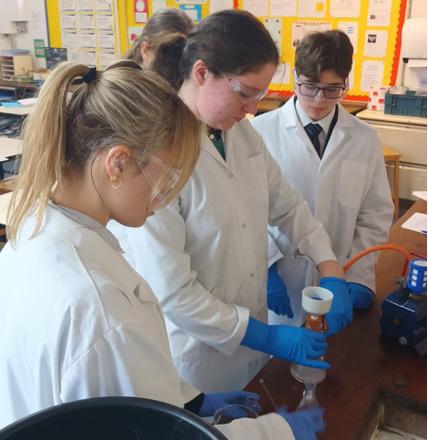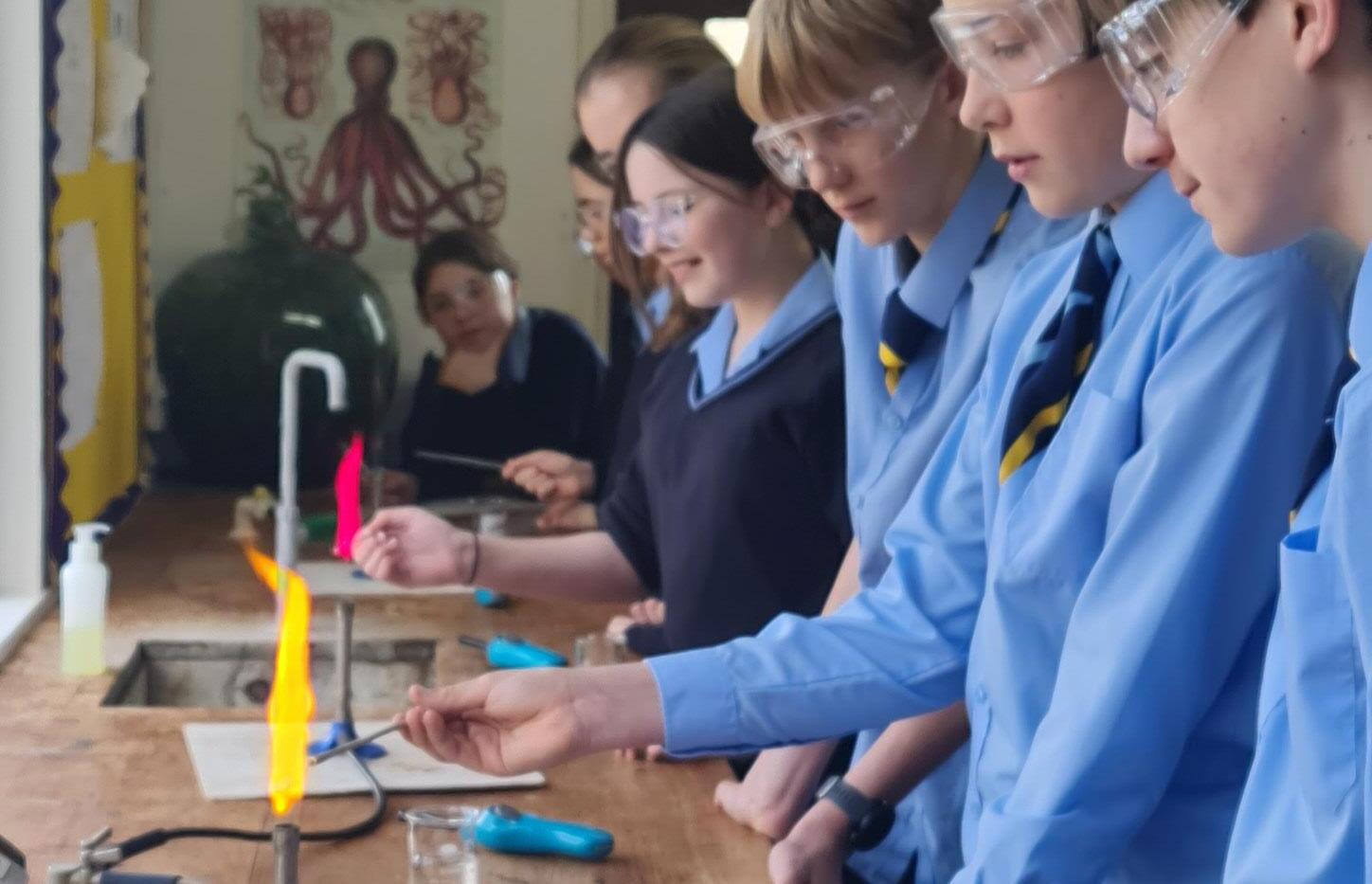
1 minute read
Complex Chemistry and Exploring the Period Table
Year 13 Chemistry student, Keziah N, explains the use of a Büchner Flask in laboratory setting.
As our Year 13 class begins to gear up to revise the mountain of content for their exams, demonstrating key core practicals has helped us take a break from chemical theory and shown us how key principles occur in a laboratory setting.
Advertisement
Recently, we prepared a transition metal complex using a new piece of equipment - a Büchner Flask. A complex ion is where a number of molecules or groups called ligands are bound to a central metal ion. Transition metal complexes can be important tools in catalysis, material synthesis and biological systems.
After preparing the solution with copper sulfate, ammonia and ethanol, we placed the solutions in an ice bath to prevent the crystals from dissolving, gaining as much product as possible. To use a Büchner Flask, a vacuum must be created in a conical flask and the solution poured over filter paper in the top of the flask. The vacuum causes any liquid to be pulled down into the flask, drying out the compound on the filter paper.
This left dry tetraamminecopper(II) sulfate-1-water crystals.
The gorgeous blue colour of the crystals is caused due to the wavelength of light absorbed and reflected by the atoms in the complex. Ligands cause the electrons of an atom to split into different levels. The electrons usually remain on the lower level - the ground state - but need energy to jump up to the excited state. Depending how big the gap between the electron states is, different wavelengths of light are absorbed. The frequencies of light which are not absorbed are reflected and this is the colour we see. This means that the tetraamminecopper(II) sulfate-1-water crystals absorb the yellow and red light and reflect the blue light for us to see.
Exploring the Period Table
Year 8 have been learning about the many elements of the periodic table by testing using different methods in the chemistry lab.
Miss Stansfield reports that students enjoyed the process,
“Year 8 have been developing their practical and analytical skills as they detect the colour metal ions emit when their electrons fall down their energy shells.”











